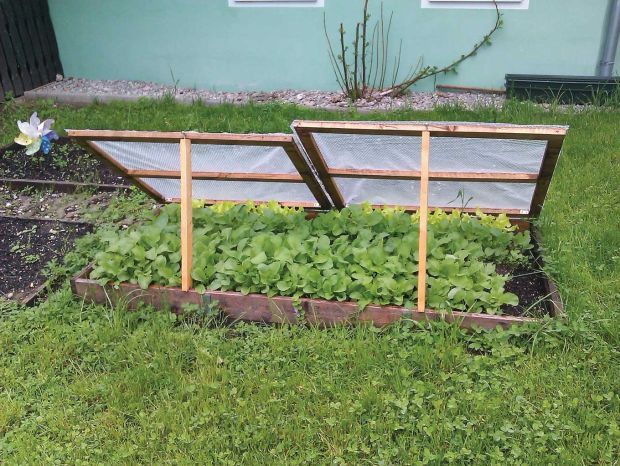Techniques for Extending Your Growing Season: Cold Frames
This series offers some common techniques that you can use to try to extend your growing season. Most of the methods help your soil stay warmer and protect your plants from harsh, cold winds. These techniques can be adopted one at a time, or you can use more than one simultaneously to try to achieve more success. When these practices are added on to others, they can have an even more protective effect. Keep reading for tips related to using cold frames.
A cold frame is a transparent roof or enclosure, built low to the ground, used to protect plants from excessive cold during Winter months. The transparent top allows sunlight to reach the plants and warm the growing bed. The frame prevents heat from escaping as quickly as it would escape from an uncovered bed, particularly at night.

Cold frames are very versatile, and are used by many gardeners due to their simplicity to set up. This article and this article are both good primers on how and why to use them. If you do decide to use cold frames, you will need to prop them open during the day to let out heat. 50 ℉ is a good starting temperature to prop open your cold frame. If you don’t want to worry about opening the cold frame yourself, there are cold frames with automatic vents that can open by themselves once a certain temperature is reached, but you can use a hinge on your cold frame and some sort of prop to hold it open if you are building one yourself. This article offers some good and affordable DIY cold frame designs.
Cold frames will not offer you the ability to grow very warm-weather plants in the coldest months, but they can help you keep growing cold-season vegetables later into the fall. Over night, it is likely that the air and soil in cold frames will freeze, but this may depend on your climate. In general, keeping cold frames small will keep them warmer. Some gardeners use them to harden off new spring plants before they are transplanted into their garden, or they simply use them to get a jump on early spring crops. If you build them correctly, they can easily be removed from any existing garden bed and placed on another as needed.
This article goes through some basic information that will be helpful to know as you make decisions about what season extenders will be best for your school’s garden.
